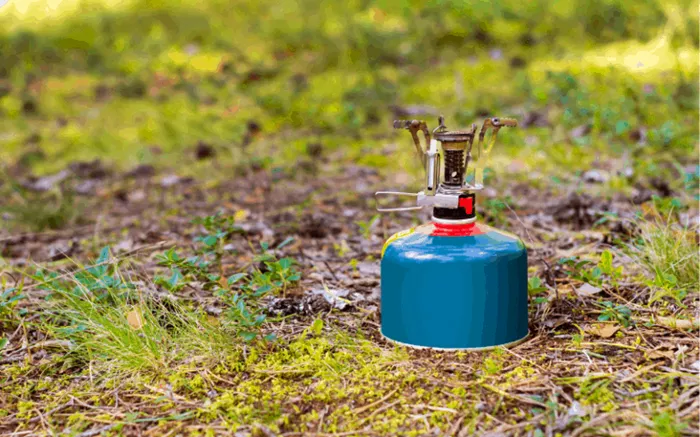Camping gas cylinders are essential for outdoor cooking and heating. They come in different sizes and types. The cost varies based on several factors. This article will explain everything you need to know.
Gas cylinders are portable and easy to use. They work with various camping stoves. Understanding their cost helps you budget for your trip. Let’s dive into the details.
Types of Camping Gas Cylinders
1. Butane Gas Cylinders
Butane cylinders are common for camping. They work well in moderate temperatures. Prices range from 5 to 20. Smaller cans are cheaper. Larger ones cost more but last longer.
Butane doesn’t perform well in cold weather. It’s best for summer camping. Always check the temperature range before buying.
2. Propane Gas Cylinders
Propane cylinders work in colder conditions. They are more versatile than butane. Prices start at
10 and can goup to 30. Propane burns hotter, making it efficient for cooking.
These cylinders are widely available. Many campers prefer them for year-round use. They are slightly heavier than butane options.
3. Mixed Gas Cylinders
Mixed gas combines butane and propane. It offers a balance of performance. Prices are between
15and35. These work well in various temperatures.
Mixed gas is a good all-round choice. It’s popular among serious campers. The cost is higher but justified by versatility.
Factors Affecting the Cost
1. Cylinder Size
Size greatly impacts the price. Small cylinders (100g) cost 5−10. Medium (250g) are 10−20. Large (500g) range from 20−35. Choose based on your trip duration.
2. Brand
Popular brands charge more. Coleman, MSR, and Primus are well-known. Their cylinders cost
15−40. Generic brands are cheaper at 5−25. Quality varies, so read reviews.
3. Material
Steel cylinders are durable but heavy. They cost 10−30. Aluminum is lighter and pricier at 15−40. Choose based on your priority – weight or durability.
4. Valve Type
Different stoves need different valves. Standard valves are cheapest. Threaded valves cost more. Make sure your cylinder matches your stove.
Where to Buy Camping Gas Cylinders
1. Outdoor Retailers
Stores like REI and Bass Pro Shop sell them. Prices are competitive. You can check the products in person. Expect to pay 10−40.
2. Online Marketplaces
Amazon and eBay offer many options. Prices start at $5. Watch for shipping costs. Read customer reviews before buying.
3. Supermarkets
Some supermarkets stock basic cylinders. Prices are low (5−15). Selection is limited. Good for last-minute purchases.
4. Camping Stores
Specialty stores have the best variety. Staff can advise you. Prices range from
10−50. You might pay more for expertise.
Price Comparison Table
Type Size Price Range Best Use
Butane 100g
5−10 Short summer trips
Butane 250g
10−15 Weekend camping
Propane 100g
8−12 Cold weather camping
Propane 450g
20−30 Week-long trips
Mixed 230g
15−25 All-season camping
Mixed 450g
25−35 Group camping
How to Save Money on Gas Cylinders
1. Buy in Bulk
Purchasing multiple cylinders reduces cost per unit. Many retailers offer discounts. This works if you camp often.
2. Choose Refillable Cylinders
Refillable options cost more initially (40−100). But they save money long-term. You pay only for the gas refills.
3. Compare Prices
Check different stores before buying. Online prices often beat physical stores. Look for seasonal sales.
4. Use Efficient Stoves
Some stoves use less gas. This makes cylinders last longer. Invest in a quality stove to reduce gas costs.
Safety Considerations
1. Proper Storage
Store cylinders in cool, dry places. Keep them away from heat sources. This prevents leaks and accidents.
2. Transport Carefully
Secure cylinders during transport. Don’t leave them in hot cars. Follow all safety guidelines.
3. Check for Leaks
Always test for leaks before use. Apply soapy water to connections. Bubbles indicate leaks.
4. Dispose Properly
Empty cylinders should be recycled. Many stores take them back. Never throw them in regular trash.
Environmental Impact
1. Non-refillable Cylinders
These create more waste. They’re cheaper but less eco-friendly. Consider the environmental cost.
2. Refillable Options
Better for the environment. Higher upfront cost but sustainable. Many campers are switching to these.
3. Recycling Programs
Some brands offer recycling. Return empty cylinders to them. This reduces environmental harm.
Frequently Asked Questions
1. How long does a gas cylinder last?
It depends on usage. A 250g cylinder lasts 2-4 hours. Cooking for two people, it might last a weekend.
2. Can I fly with camping gas?
No. Airlines prohibit gas cylinders. Buy them at your destination instead.
3. Are all gas cylinders universal?
No. Check your stove’s requirements. Valve types differ between brands.
4. How do I know when a cylinder is empty?
Weigh it. Compare to the tare weight marked on the cylinder. Or use it with water to feel the remaining gas.
Conclusion
Camping gas cylinder prices vary widely. Butane is cheapest but limited. Propane works in cold weather. Mixed gas offers the best performance.
Consider size, brand, and material when buying. Look for deals to save money. Always prioritize safety.
With this knowledge, you can choose the right cylinder for your needs. Happy camping!
Related topics:
The 4 Best Portable Camping Ovens: A Detailed Guide
Best Portable Gas Cookers: A Comprehensive Guide
Which is Better for Camping: Butane or Propane?

